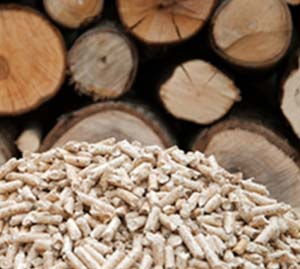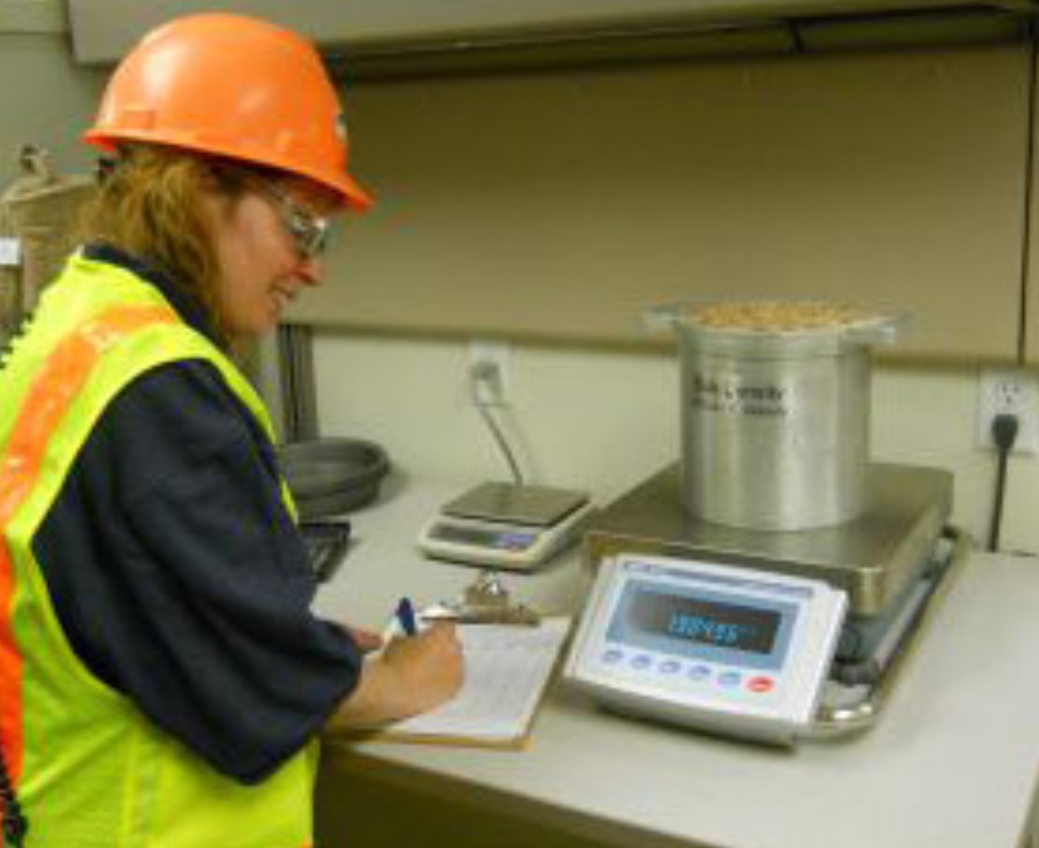 To meet their energy demands, more and more companies, commercial groups and households are becoming wood pellet-oriented consumers. Pellet transition tendencies gain in their popularity as pellet fuel is a more sustainable source of energy than fossil ones. Ukrainian biofuel portal makes detailed analysis of wood pellet output rates to find out the cost and energy efficiencies of wood fuel in comparison with other types of fuel to prove their cost-effectiveness.
To meet their energy demands, more and more companies, commercial groups and households are becoming wood pellet-oriented consumers. Pellet transition tendencies gain in their popularity as pellet fuel is a more sustainable source of energy than fossil ones. Ukrainian biofuel portal makes detailed analysis of wood pellet output rates to find out the cost and energy efficiencies of wood fuel in comparison with other types of fuel to prove their cost-effectiveness.
The energy rate of wood pellets is usually defined by their calorific value. As a rule, this indicator is understood as the amount of energy which is released as heat in the process of fuel combustion and its interaction with oxygen. The unit is expressed in Gj per tonnes and may be different when given by various pellet manufacturers. Moreover, the calorific value of wood pellets depends on the type of pellets you purchase, their moisture content, ash content etc. The calorific value is one of the vital properties of biomass and wood pellets in particular, helping estimate the efficiency of the fuel by numerical simulations of their combustion in different conversion systems operating on biofuel.
It is clear that the higher calorific rates are the more energy per unit will be received and the less pellet fuel needs combustion to get the necessary amount of heating energy. As a rule, there are typical calorific value rates for every type of fuel showing the fuel capability of producing energy. As far as wood pellets are concerned, the fuel consists of Carbon, Nitrogen and Oxygen. Their energy output proves to be not worse than that of the traditional sources of energy. By way of example, it was found that 1000 kilograms of wood pellets can give as much energy and heat as it can be received from 1600 kilograms of logwood, 475 cubic meters of gas, 500 liters of diesel fuel and 685 liters of fuel oil.
Wood pellets are good candidates to change coal combustion, which is considered to be of high environmental influence having great emissions of the greenhouse gas. In comparison, wood pellets are considered to be carbon neutral fuel with relatively high output rates as compared to its counterparts. According to the information provided by Ukrainian Biofuel Portal, the energy outputs of wood pellets and coal do not differ considerably. The energy content highly depends on the content of moisture in the fuel, thus, wood pellets of high quality with relatively small moisture content rates, approximately 8-10% per unit, will show the efficiency of 19 Gj per tonne. At the same time, coal with no moisture content can produce 24.8 Gj per tonne. Being relatively cheap, the sustainability properties of charcoal are much poorer than those of wood pellets. That is why a lot of big power stations, for example Drax, switch to wood pellets preferring them to the more environmentally unfriendly coal. Moreover, Drax will not only be ecologically cleaner, but the conversion will play a vital role in the future success of the power station. CPF or so called carbon price floor introduced by the government of the United Kingdom has significantly increased the prices for the fossil fuel for electrical power generation. Hence, at the beginning the price for coal had been £0.44 ($0.75) per gigajoule, but rapidly increased up to £1.63 ($1.77) in 2016. That makes the combustion of coal very challenging in terms of economical efficiency.
Wood pellets are a very efficient type of fuel in terms of pricing. As far as we can see, fuels produced of biomass are, as a rule, 25-30% cheaper than their fossil counterparts and more stable in terms of price fluctuations. In the future, it is more likely that the legislation aimed at the reduction of carbon emissions will sooner explode the reputation of fossil fuels than influence the cost of biomass fuel. This can be proved by comparing average oil prices with wood pellet prices. It has frequently been said that the prices of wood pellets are highly dependent on oil prices and tend to follow them. However, according to the recent statistics, pellet prices have faced significantly less fluctuations than oil prices staying on the approximate level of 5 cents per Kwh since 2000. At the same time, for the same period oil prices have fluctuated from 5 cents per kWh up to 11 cents per kWh in 2013. Despite the fact that the prices for both sources of energy have currently leveled, we can see that wood pellet prices are of much higher stability.

As far as heating is concerned, Ukrainian Biofuel Portal analysts found out that one tonne of wood pellets is equal to 120 gallons of oil, 170 gallons of propane, 4,775 kWh of electricity. In general, this figures prove that heating with wood pellets is more efficient than with fossil fuels. The only type of fuel which is not more expensive or even sometimes cheaper is natural gas. 16,000 ft3 of natural gas are equal to one tonne of wood pellets. However, the cheapness of this source of energy is relative as the relationships between the European countries and Russia are far from being friendly, that makes gas prices quite unstable. Those people who are eager to use wood pellets as the source of residential heating energy can substantially save their money, as pellet fuel costs are significantly lower as compared with the other types of fuel. Hence, the price in cents for the kWh of pellets is 4,54 while natural gas, fuel oil, liquid petrol gas and electricity are much more expensive, with 8,36 cents per kWh, 6,35 cents per kWh, 7,26 cents per kWh and 20,66 cents per kWh correspondingly.
Nowadays, a lot of households and industrial enterprises are interested in wood pellet transition. However, it is important to define all factors which influence the effective energy output of wood pellets. It goes without saying that pellet fuel is economically viable, as the price is rather defined by the inner economy of the country than by the world factors. If wood pellets are rightly chosen and combusted in an energetically effective pellet stove or pellet boiler they can perform with high energy efficiency and heat value of 4,5 – 5,0 kWh per kilogram. Such efficiency is quite similar to that of coal. By way of example, the heat value of hard coal can fluctuate from 15 up to 25 MJ per kilogram, the output value of brown coal is lower, with heat value from 14 up to 22 MJ per kilogram. At the same time, wood pellets possess the energy output of 18,4 MJ per kilogram. As far as we can see, wood pellets are not of lower efficiency while their price is considerably lower. Moreover, wood pellet fuel stands out by its low ash content as compared with coal fuel. While wood coal and brown coal can have from 10 up to 30 per cent of ash content, wood pellets are almost free of ash with 2,5 per cent of their weight percentage. In terms of ecological sustainability, the emissions of greenhouse gas and ash are 15-20 times lower than those of hardcoal and browncoal.
In order to increase the efficiency of wood pellet installation and thus, the heating value of pellet fuel, the purchaser should pay attention to the quality of the product. The pellets of the highest quality or so-called premium pellets are made of 100% wood and do not contain any bark or other filling substances. The second type of this fuel is called industrial pellets. The abovementioned particles can have some content of raw bark and branches, which makes them of lower energy efficiency with higher ash and moisture content.

Pellet fuel is significantly dryer than logwood fuel. Thus, the content of moisture in wood pellets accounts for 8-12%, while logwood has an approximate moisture content of 30-50%. This quality provides a high heating value as compared with logwood or wood chips. Hence, in the process of combustion of one tonne of wood pellets 5000 kWh heat may be received – figures 50% higher than those received from the traditional wood.
If you are interested in providing your home with heat using wood pellets, the experts advise to use only household pellets. Despite being relatively expensive, with the approximate price of 150 Euro per tonne, while their industrial analogues cost 100 Euro per tonne, household wood pellets produce much more heat, with both higher calorific value and heat value rates. The materials to produce wood pellets may vary significantly from manufacturer to manufacturer. However, in contrast with logwoods, wood pellets are made of softwood. For example, pellets made of conifers show the highest calorific value rates and produce the most heat. Of course, such pellets cost more but they are much more profitable, which is caused by low ash and moisture contents. Thus, the necessary amount of heat will be received with lower resource spending.
More and more industrial energy companies convert their basic source of energy in favour of wood pellets. This can be explained by the economic viability of the renewable source of energy. Firstly, the energy content of pellets is about 5 kW/kg (depending on the pellet quality - better quality - more heat - less consumption). These figures prove that wood pellets can easily substitute coal.
In comparison with conventional wood waste (wood chips, shavings), pellets also have a much higher energy content (chips - 850 kWh / m3, pellets - 3150 kWh / m3, diesel fuel - 10 000 kWh / m3). For the time being, a lot of coal companies transit to wood pellets, taking into account carbon tax policies of different European countries. Power produced from wood pellets is of the same price as that produced from natural gas. Moreover, the strategy of conversion results in the creation of new job places rather than destroying the old ones. Of course, solar or wind energy could be free and less expensive to use, but in the process of conversion many other processes are taken into account. That is why wood pellets are the best candidates for transition.
Thus, wood pellets are one of the most energy effective sources of energy. Among their wooden counterparts, such as wood logs, wood chips and wood shavings, wood pellets are the source of energy with the highest energy content. This is explained by their low moisture content and high density rates. Moreover, wood pellets prove to be good substitutes for coal while possessing almost the same calorific value. Hence, wood pellets are becoming more popular both in the households and in the industrial sector. For the time being, this source of energy is one of the most profitable ones and as far as the price is concerned, wood pellets give way only to natural gas.
Author: Harry van den Broek